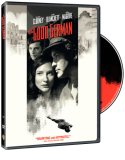Synopsis
Steven Soderbergh has done a successful job of leveraging his reputation through the years in order to experiment with various directorial techniques and styles. With mainstream successes like Erin Brockovich and Traffic, he’s managed to keep in the spirit of anindependent film, producing stellar, less visible works like Bubble and a remake of Tarkovsky’s Solaris. Many of his works over the last few years have been with George Clooney, who starred in Solaris and < ...>Ocean’s Eleven, and was Soderbergh’s partner in a production house that released their own pieces of cinema. So Clooney and Soderbergh team together on film once again for The Good German, Soderbergh’s ode to ‘40s noir films.
Based on a novel by Joseph Kanon which was adapted for the screen by Paul Attanasio (Quiz Show), Clooney plays Jacob Geismer, a correspondent who is returning to Germany for the talks in Potsdam on how post-war Germany will be divided. His driver for the tour is Tully (Tobey Maguire, Spider Man 3), a corporal who runs into the occasional shady business proposal and whose steady girlfriend is Lena (Cate Blanchett, The Aviator). As things quickly develop, not only is this not Jake’s first trip in Germany, but he and Lena were a couple before the war started. Since the war, Lena married a German SS officer that both the Americans and Russians are trying to find to get any relevant intelligence secrets. When Tully is found murdered in the “Russian sector” of Germany, Jake is lured more and more into a suspenseful circumstance that is far more than he anticipated.
From a style perspective, Soderbergh keeps strictly to the feeling that a 40’s film would provide. Everything was shot in close proximity to the actors, lots of rear projection was used, and the overall vibe of having a film with dated stock is clear to the viewer. But for all the good the production side brings, it’s the actors themselves that just don’t seem to hold too much water. Clooney seems to just be doing the same thing that he’s done in other films, and Maguire is downright comical in yelling at people and swearing constantly. In fact, the only person that comes close to living up to the throwback feeling is Blanchett. She played Katherine Hepburn in the film that won her the Oscar, and she appears quite striking in the film, and is more than convincing as the scheming German Lena. But when other people should have been holding their water, it just doesn’t happen, which results in a final act that you’re glad to see finally over with.
Video
It’s kind of weird, the film is presented in 1.33:1, but was altered from a shot 1.85:1 film style to keep with a ‘40s feel that Soderbergh (using the pseudonym Peter Andrews) uses to shoot the cinematography. All black and white and everything looks great. The whites are blown out on purpose, the blacks are consistently solid, and it conveys the feeling of its era rather well.
Audio
Surprisingly, there’s a Dolby Digital 5.1 soundtrack that accompanies the film, and it has a lot of subtle sound effects that come across. The film utilized boom microphones which help to accentuate the ambient noise to boot. The score (by Thomas Newman) sounds great throughout the film as well, and overall it brings the goods.
Special Features
Nary a thing, aside from some previews of Warner films which aren’t worth scoring. Considering what was going on in this film, to not even have an interview with Soderbergh is a bummer.
Closing Thoughts
I enjoyed the experimentation of The Good German more than the execution behind it. A lot of people seem to be in the same frame of mind as well, but if that’s the case, I’d recommend for people to watch The Third Man (which was just released and remastered by Criterion) for a more enjoyable film experience.






